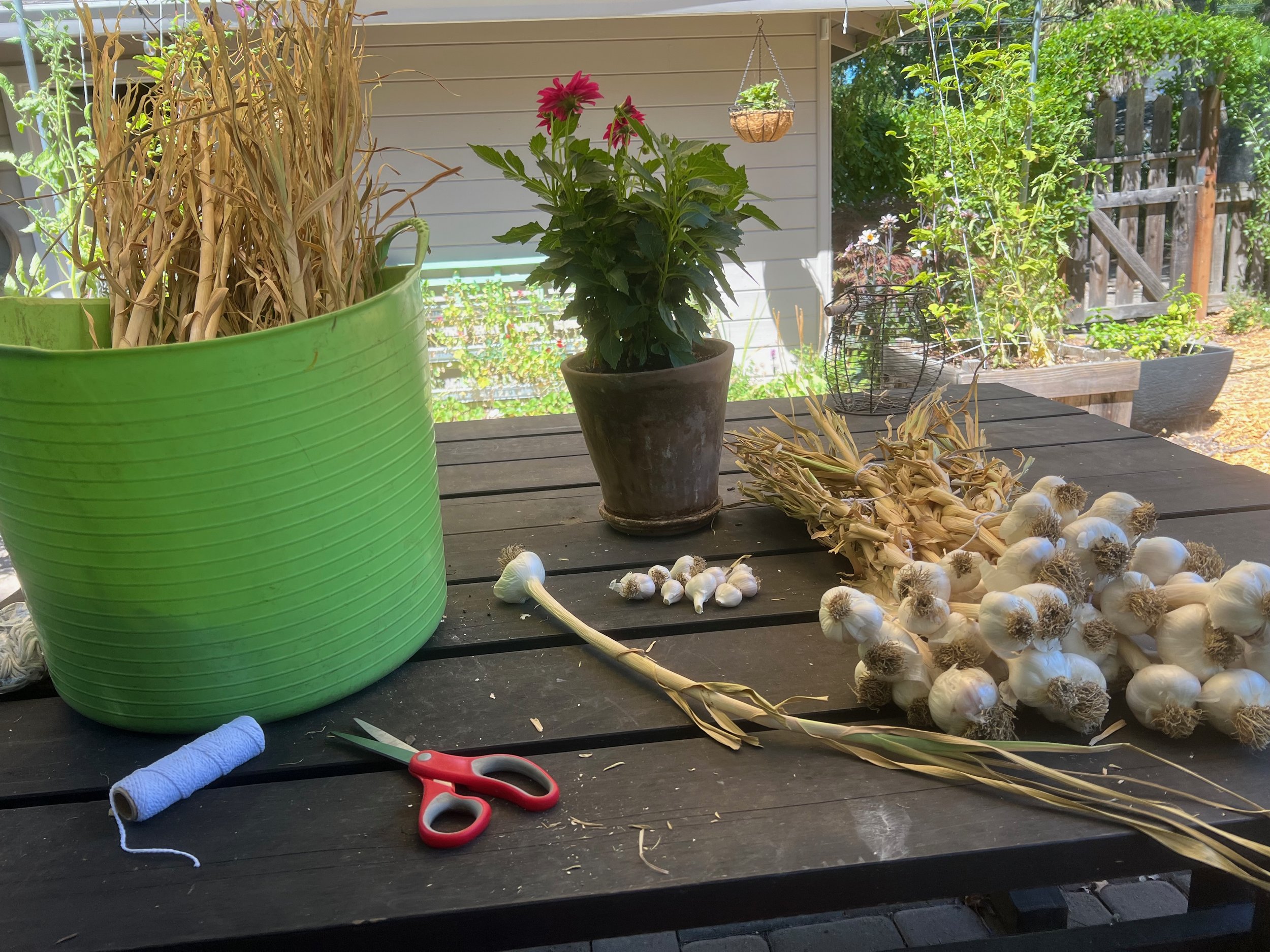It’s that glorious season when every time I go out to check the garden, I see another tomato ripening on the vine. I’ve had a few bad years of tomatoes at Poppy Corners, and have had to rely on my school garden supply; this year I’ve gotten lucky. Somehow I’ve found the right place (morning and late afternoon sun, midday shade) with the right watering plan (every other day, deeply), with the correct amount of pruning (none!), and with the right method of staking (Florida weave, sort of) - or at least ‘correct’ and ‘right’ for this particular summer in this particular climate. I may do the exact same thing again next year and get entirely different results - that’s the way things are going, my friends. I’ll never take a good harvest for granted again.
Anyway, it’s been glorious to have our fill of tomato dishes. I love summer cooking - lots of grilling, and picking of basil, and shucking of corn. I ask you, what else does one need for a delicious meal?
Here are some recipes that have been in heavy rotation here.
Summer Steak with Corn and Tomatoes: This one comes from the always-reliable Deb at Smitten Kitchen. This is an easy, delicious meal, and if you double it, you’ll have great leftovers for lunch the next day. You don’t have to use cherry tomatoes; slicing work just as well. And any ‘flat’ steak will do - skirt, flank, flap, flat iron. I also use another ear of corn because why not?
Chickpea Tagine with Tomato Jam (and fresh-caught halibut!): Adam is spending the summer with us as he works his way through job interviews. He’s been lucky enough to go out on a friend’s boat several times, fishing in the Pacific. He’s caught rockfish and halibut. He grilled the halibut to go with this tagine and it was amazing. We just piled the fish with the chickpeas and ate it all at once. Alexandra at Alexandra Cooks is a wonderful recipe-writer and has a lot of fabulous vegetarian recipes. I made my own ras-el-hanout and used some as seasoning on the fish, too. You could also have this with any protein of your choice although I think pork chops would be delicious with this.
Garlic Lime Steak and Tomato Salad: Another Smitten Kitchen recipe, this uses up a lot of ingredients we have in the garden right now (beans, cucumbers, cilantro, basil, jalapenos) and has a real Vietnamese flavor. I usually double the dressing/marinade and up the fish sauce a little bit.
Pasta Pomodoro with Grilled Chicken: You don’t need a recipe for this. Just throw together plenty of chopped tomatoes, garlic, basil, salt, and olive oil on a sheet pan and roast in a 425 degree oven for 20 minutes or so. Marinate some chicken in lemon juice, sherry, garlic, and salt, then grill it. Cook some thin noodles. Wham! You’ve got pasta pomodoro. Any leftover sauce can be frozen and used later as a topping for pretty much anything!
Polenta-baked Eggs with Corn, Tomato, and Fontina: This is another Smitten Kitchen recipe that I got from one of Deb’s cookbooks. It’s especially great this time of year because eggs are also usually quite plentiful from our backyard chickens. Cook 1/2 cup polenta following directions on the package (I like Bob’s Red Mill or Anson Mills). When the polenta is nearly finished cooking, add 1/2 cup of corn kernels (fresh or thawed frozen). Stir and cook for a few more minutes. Add 1/2 cup grated fontina, and season well with salt and pepper. Then add 2 tablespoons of creme fraiche or sour cream. Stir until everything is creamy. Coat a cast iron skillet with butter, and transfer over the polenta mixture. Stir in a chopped tomato (or two) or some pureed tomato sauce. Smooth the surface, and make four indentations. Crack an egg into each one. Sprinkle with salt and pepper, and with more grated fontina. Bake in a 400 degree oven until the whites are set. You might have to broil it for a few minutes to finish it up. It’s a trick to get the whites set but the yolks still runny, but the end result is delicious with a good crusty baguette.
One-pan Farro with Tomatoes (and Tom’s homemade Italian sausage!): Tom made a huge amount of Italian sausage this past spring, and it’s been fun to add it to all kinds of dishes. I love the chewy nuttiness of farro (I also like Bob’s Red Mill farro), and it goes really well with meaty things. Again, you can use any kind of tomato here.
Savory Tomato Galette with Tomato, Corn, Caramelized Onions, and Gruyere: Tom doesn’t love this because he has trouble with any soggy bottom pastry, but I don’t find this recipe all that soggy (the corn and cheese at the bottom help a lot) and frankly I wouldn’t mind if it was. Have I mentioned that Alexandra has my favorite focaccia recipe of all time? It’s worth checking that out, too. Both Adam and Rin make it regularly for sandwiches. Alexandra’s good at bread, in general, and has written both a bread cookbook (‘Bread, Toast, Crumbs’) and a new pizza cookbook.
Happy Cooking!















